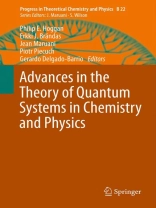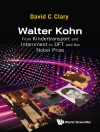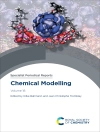Advances in the Theory of Quantum Systems in Chemistry and Physics is a collection of 32 selected papers from the scientific contributions presented at the 15th International Workshop on Quantum Systems in Chemistry and Physics (QSCP-XV), held at Magdalene College, Cambridge, UK, from August 31st to September 5th, 2010.
This volume discusses the state of the art, new trends, and the future of methods in molecular quantum mechanics and their applications to a wide range of problems in chemistry, physics, and biology. The breadth and depth of the scientific topics discussed during QSCP-XV are gathered in seven sections:
I. Fundamental Theory;
II. Model Atoms;
III. Atoms and Molecules with Exponential-Type Orbitals;
IV. Density-Oriented Methods;
V. Dynamics and Quantum Monte-Carlo Methodology;
VI. Structure and Reactivity;
VII. Complex Systems, Solids, Biophysics.
Advances in the Theory of Quantum Systems in Chemistry and Physics is written for research students and professionals in Quantum systems of chemistry and physics. It also constitutes and invaluable guide for those wishing to familiarize themselves with research perspectives in the domain of quantum systems for thematic conversion or simply to gain insight into the methodological developments and applications to physics chemistry and biology that have actually become feasible by the end of 2010.
Innehållsförteckning
Time Asymmetry and the Evolution of Physical Laws.- Spatially-Dependent-Mass Schrödinger Equations with Morse Oscillator Eigenvalues: Isospectral Potentials and Factorization Operators.- Relativistic Theory of Cooperative Muon-Nuclear Processes: Negative Muon Capture and Metastable Nucleus Discharge.- Two-Range Addition Theorem for Coulomb Sturmians.- Why Specific ETOs are Advantageous for NMR and Molecular Interactions.- Progress in Hylleraas-CI Calculations on Boron.- Structural and Electronic Properties of Polonium under Hydrostatic Pressure.- Complexity Analysis of the Hydrogenic Spectrum in Strong Fields.- Atomic Density Functions: Atomic Physics Calculations Analyzed with Methods from Quantum Chemistry.- Understanding Maximum Probability Domains with Simple Models.- Density Scaling for Excited States.- Finite Element Method in DFT Electronic Structure Calculations.- Shifts in Excitation Energies Induced by Hydrogen Bonding: A Comparison of the Embedding and Supermolecular Time-Dependent DFT Calculations with the Equation-of-Motion Coupled-Cluster Results.- Multiparticle Distribution of Fermi Gas System in Any Dimension.- Hierarchical Effective-Mode Approach for Extended Molecular Systems.- Short-Time Dynamics through Conical Intersections in Macro-systems: Quadratic Coupling Extension.- Theoretical Methods for Nonadiabatic Dynamics “on the fly” in Complex Systems and its Control by Laser Fields.- A Survey on Reptation Quantum Monte Carlo.- Quantum Monte Carlo Calculations of Electronic Excitation Ener-gies: the Case of the Singlet n → (CO) Transition in Acrolein.- Analysis of the Charge-Transfer Mechanism in Ion-Molecule Collisions.- Recombination by Electron Capture in the Interstellar Medium.- Systematic Exploration of Chemical Structures and Reaction Pathways on the Quantum Chemical Potential Energy Surface by Means of the Anharmonic Downward Distortion-Following Method.- Neutral Hydrolysis of Methyl Formate from Ab-initio Potentials and Molecular Dynamics Simulation.- Radial Coupling and Adiabatic Correction for the Li Rb Molecule.- Centre-of-Mass Separation in Quantum Mechanics: Implications for the Many-Body Treatment in Quantum Chemistry and Solid-State Physics.- Anti-Adiabatic State – Ground Electronic State of Superconductors.- Delocalization Effects in Pristine and Oxidized Graphene Substrates.- A Review of Bonding in Dendrimers and Nano-Tubes.- 20-Nanogold Td and Low-Energy Hollow Cages: Void Reactivity.- A Theoretical Study of Complexes of Crown Ethers with Substituted Ammonium Cations.- Systematic Derivation and Testing of AMBER Force Field Parameters for Fatty Ethers from Quantum Mechanical Calculations.- Theoretical Studies on Metal-Containing Artificial DNA Bases.
Om författaren
PHILIP HOGGANUniversité Blaise-Pascal, Clermont-Ferrand, France
ERKKI BRÄNDASDepartment of Quantum Chemistry, University of Uppsala, Sweden
JEAN MARUANILaboratoire de Chimie Physique, CNRS and UPMC, Paris, France
PIOTR PIECUCHMichigan State University, East Lansing, Michigan, USA
and
GERARDO DELGADO-BARRIOInstituto de Física Fundamental, CSIC, Madrid, Spain












